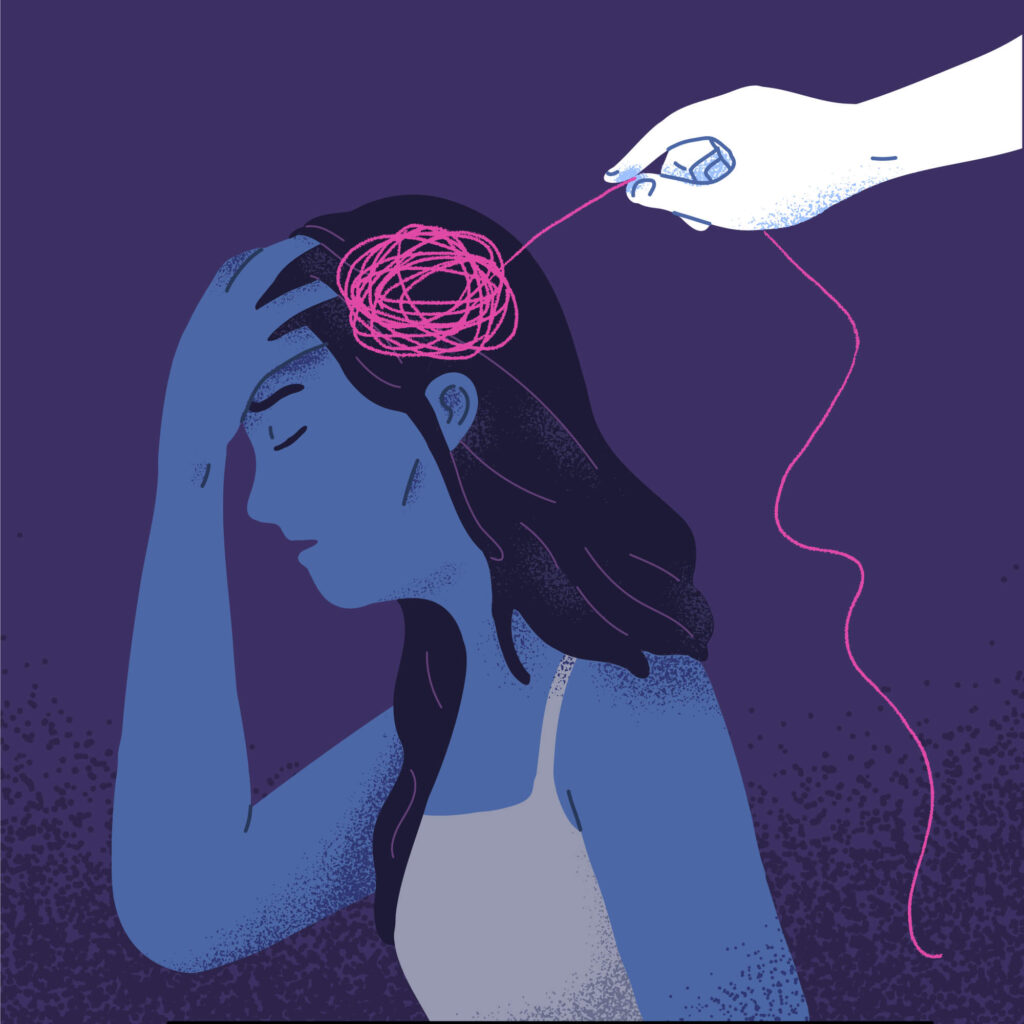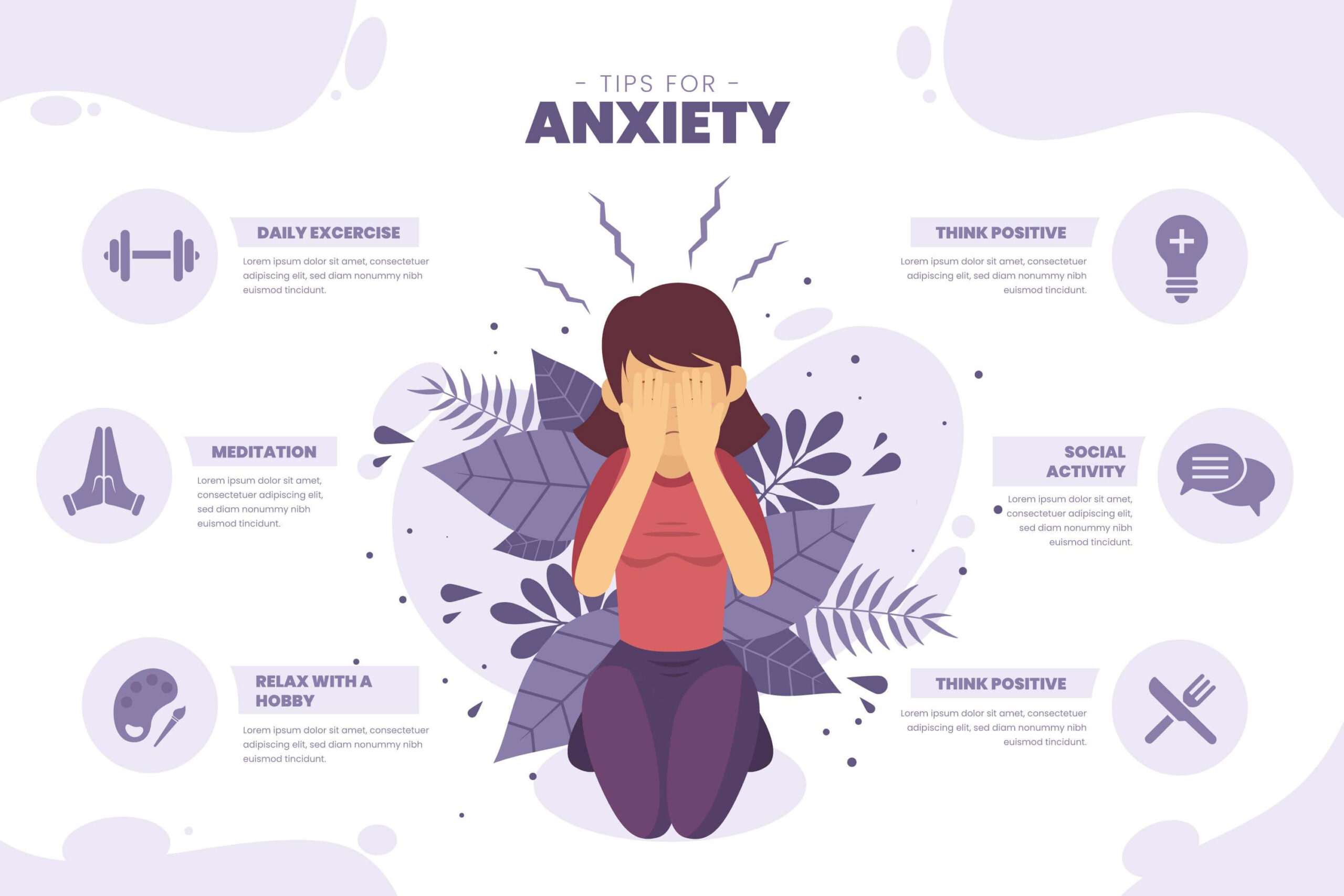Anxiety symptoms can manifest in various ways, affecting individuals both physically and emotionally. Understanding these symptoms is crucial for recognizing and managing anxiety effectively.
Table of Contents
ToggleTypes of Anxiety Disorders
There are several types of anxiety disorders, including generalized anxiety disorder (GAD), social anxiety disorder, panic disorder, and specific phobias. Each type may present with its unique set of symptoms.
Common Triggers
Anxiety symptoms can be triggered by various factors such as stress, trauma, genetics, and environmental factors. Identifying triggers is essential for developing coping strategies.
Physical Symptoms of Anxiety
Physical symptoms of anxiety often manifest in the body, indicating heightened stress levels and arousal.
Heart Palpitations
One common physical symptom is heart palpitations, where individuals may feel their heart racing or pounding in their chest.
Muscle Tension
Anxiety can lead to muscle tension, resulting in stiffness or soreness in the body, particularly in the neck, shoulders, and back.
Sweating and Trembling
Excessive sweating and trembling are also common physical manifestations of anxiety, indicating the body’s heightened state of arousal.
Emotional Symptoms of Anxiety
In addition to physical symptoms, anxiety can also impact individuals emotionally, affecting their mood and overall well-being.
Excessive Worrying
One of the hallmark emotional symptoms of anxiety is excessive worrying, where individuals may constantly dwell on potential threats or negative outcomes.
Irritability
Anxiety can make individuals more irritable and on edge, leading to increased sensitivity to stressors and frustration with daily tasks.
Difficulty Concentrating
Anxiety symptoms can interfere with cognitive functioning, making it challenging to concentrate, make decisions, or retain information.

Behavioral Symptoms of Anxiety
Anxiety symptoms can also manifest in behavioral patterns and actions, influencing how individuals interact with their environment.
Avoidance Behavior
Individuals experiencing anxiety may engage in avoidance behavior, avoiding certain situations or activities that trigger their anxiety.
Restlessness
Restlessness is a common behavioral symptom of anxiety, characterized by an inability to sit still or relax, often accompanied by pacing or fidgeting.
Sleep Disturbances
Anxiety can disrupt sleep patterns, leading to difficulties falling asleep, staying asleep, or experiencing restful sleep.

Impact of Anxiety Symptoms on Daily Life
The presence of anxiety symptoms can significantly impact an individual’s daily functioning and overall quality of life.
Seeking Help (Anxiety Symptoms): Diagnosis and Treatment
It is essential for individuals experiencing its symptoms to seek professional help for proper diagnosis and treatment.
Medical Evaluation
A medical evaluation by a healthcare professional can help rule out any underlying medical conditions and determine the presence of an anxiety disorder.
Therapy and Counseling
Therapy and counseling, such as cognitive-behavioral therapy (CBT), can help individuals learn coping skills and strategies to manage their anxiety effectively.
Medication Options
In some cases, medication may be prescribed to help alleviate anxiety symptoms, such as antidepressants or anti-anxiety medications.

Self-Help Strategies for Managing Anxiety Symptoms
In addition to professional treatment, there are several self-help strategies individuals can incorporate into their daily lives to manage anxiety symptoms.
Relaxation Techniques
Practicing relaxation techniques such as deep breathing, progressive muscle relaxation, or guided imagery can help calm the mind and body during periods of anxiety.
Exercise and Physical Activity
Regular exercise and physical activity can help reduce stress and anxiety levels, promoting overall well-being and mental health.
Mindfulness and Meditation
Mindfulness practices and meditation can help individuals cultivate awareness of their thoughts and emotions, reducing reactivity to stressors and promoting a sense of inner calm.
Conclusion

In conclusion, anxiety symptoms can manifest in various ways, impacting individuals both physically and emotionally. By understanding these symptoms and seeking appropriate help and support, individuals can learn to manage their anxiety effectively and improve their overall quality of life.
Frequently Asked Questions (FAQs)

Q: Can anxiety symptoms go away on their own?
While some anxiety symptoms may subside over time, it is essential to seek professional help for persistent or severe symptoms.
Q: Are anxiety symptoms the same for everyone?
No, anxiety symptoms can vary widely from person to person, depending on factors such as the type of anxiety disorder and individual differences.
Q: Can lifestyle changes help alleviate anxiety symptoms?
Yes, adopting healthy lifestyle habits such as regular exercise, adequate sleep, and stress management techniques can help reduce anxiety symptoms.
Q: Is medication necessary for treating anxiety symptoms?
Medication may be recommended in some cases, but it is often used in conjunction with therapy and other self-help strategies for comprehensive treatment.
Q: How long does it take for anxiety symptoms to improve with treatment?
The duration of treatment varies depending on individual factors such as the severity of symptoms and the effectiveness of interventions. It is essential to be patient and consistent in implementing treatment strategies.








